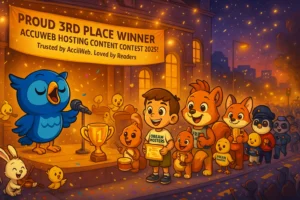Disclosure: We’re reader-supported. When you buy through links on our site, we may earn an affiliate commission at no extra cost to you. For more information, see our Disclosure page. Thanks.
Contents
WebP vs. PNG vs. JPEG: The Best Image Format for WordPress 2025
When selecting the best image format for WordPress in 2025, the choice between WebP, PNG, and JPEG will depend on factors like file size, quality, and the specific use case of the image on your website. Here’s a breakdown of the strengths and weaknesses of each format to help you decide which one is best for your WordPress site:
1. WebP
Overview:
WebP is a modern image format developed by Google that supports both lossy and lossless compression. It was specifically designed to provide smaller file sizes while maintaining high quality.
Pros:
- Smaller File Sizes: WebP images tend to be 25-35% smaller than equivalent JPEGs or PNGs, which is great for improving website speed.
- Supports Transparency: Like PNG, WebP supports transparent backgrounds, but with much smaller file sizes.
- Quality: Offers high-quality images even at smaller file sizes, making it ideal for responsive design and faster load times.
- Browser Support: WebP is supported by all major browsers (Chrome, Firefox, Edge, and Safari since 2020), though older browsers may require fallbacks to JPEG or PNG.
Cons:
- Compatibility Issues: Some older browsers or platforms (like Internet Explorer) don’t support WebP, which may require fallback solutions.
- Editing Challenges: While WebP supports high quality and small file sizes, it’s not as easily editable as PNG or JPEG without converting it to a different format.
Best For:
- Websites that prioritize performance, fast load times, and responsive design.
- E-commerce sites with large image galleries, product images, or portfolios.
- When optimizing images for mobile and desktop versions.
2. PNG
Overview:
PNG (Portable Network Graphics) is a lossless image format known for its high quality and support for transparency.
Pros:
- Lossless Compression: PNG files retain all image data, making them ideal for images that require high quality, like logos, icons, and graphics with sharp edges.
- Transparency: PNG supports transparent backgrounds, making it perfect for overlay images, logos, or elements that need to blend with the background of a page.
- Excellent for Text and Graphics: The format handles text and simple graphics much better than JPEG or WebP, maintaining crisp lines and sharp details.
Cons:
- Larger File Sizes: PNGs are usually larger than JPEGs and WebPs, especially for photographic images. This can affect website load times.
- No Animation: Unlike formats like GIF, PNG is not suitable for animation.
Best For:
- Logos, icons, and graphics that need transparency or very high detail.
- Images that will be displayed in a fixed size without much scaling.
3. JPEG
Overview:
JPEG (Joint Photographic Experts Group) is the most widely used image format, known for its efficient lossy compression and suitability for photographs.
Pros:
- Smaller File Sizes: JPEG images are typically much smaller than PNG and retain decent quality, making them great for general-purpose photographic images.
- Widely Supported: JPEG is supported across all browsers and platforms.
- Good for Photographs: JPEG excels in compressing photographic images without significant visual degradation, making it ideal for lifestyle, travel, and e-commerce photos.
Cons:
- Lossy Compression: JPEG’s lossy compression means you lose some image data each time the image is saved, which can result in artifacts, especially at higher compression levels.
- No Transparency: JPEG cannot support transparent backgrounds.
- Not Ideal for Text: JPEG is not great for images with sharp lines or text, as it may introduce blurring.
Best For:
- Photographic images like blog post pictures, background images, or product images in e-commerce.
- Websites that require smaller image file sizes for faster load times but still need reasonable quality.
Which Image Format Is Best for WordPress in 2025?
- For Fast Page Load Times and SEO:
WebP is likely the best option due to its smaller file size and ability to maintain high-quality visuals. Faster load times are essential for SEO rankings, especially with Google’s emphasis on Core Web Vitals. You should use WebP wherever possible and implement fallbacks to JPEG or PNG for compatibility with older browsers. - For Images with Transparency:
PNG is still the go-to format if you need images with transparent backgrounds, such as logos, icons, or overlays. If transparency isn’t required, WebP can be used instead for better compression. - For Photographs and General-Purpose Images:
JPEG remains a great choice for photos due to its efficient compression. However, in 2025, WebP may be a better alternative for JPEG images, as it offers better compression without sacrificing visual quality. - For Mixed Use:
Ideally, you should use a combination of formats:- WebP for most images to ensure fast loading and optimal quality.
- PNG for logos, icons, and graphics with transparency.
- JPEG for photographs where WebP isn’t an option.
Conclusion:
In 2025, WebP is the preferred image format for WordPress due to its smaller file sizes and high quality. However, for maximum compatibility, it’s wise to serve WebP images with fallback options for browsers that don’t support it. PNG is perfect for transparent images and graphics, and JPEG remains a strong choice for photographic content, though WebP can outperform it in many cases.
Using a mix of these formats based on the specific needs of each image on your site will help improve performance, user experience, and SEO.

